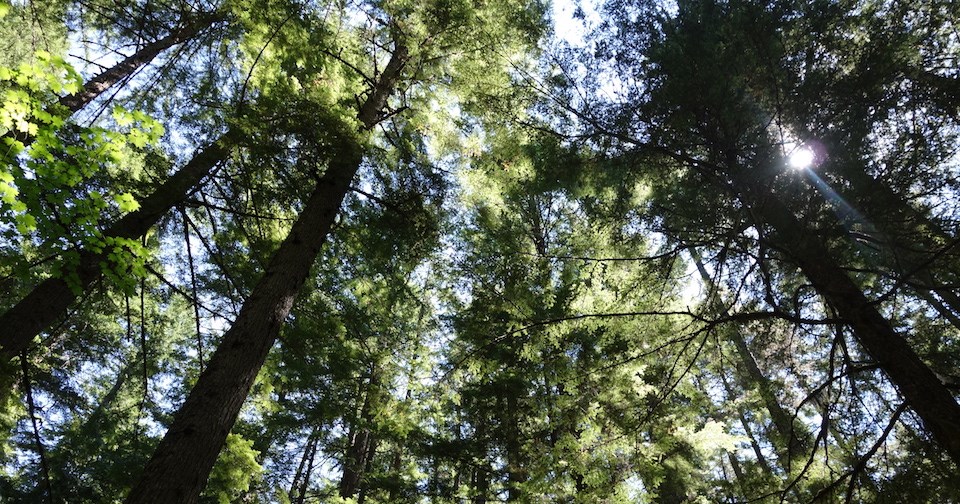Talking Trees
Whoosha- whoosha- whoosh go the leaves. They rustle at the softest breeze, sending chills down one's spine.
Each tree is vastly different from the other, their uniqueness exhibiting individuality. There are the tall palm trees, their spiky leaves overlooking the sky. The fruit they produce is sweet and juicy for one to relish; their leaves can be dried to make any artifact one desires.
There are the broad-leaved pipal trees, known to be sacred in many cultures.
There are the wide-trunked tamarind trees, who make the most deliciously sour fruits that make you cringe in delight.
There are the medicinal neem trees, their thin leaves able to cure almost anything.
There are the sweet mango trees, annually giving us the sweet treat of mangoes.
There are the hard and hollow bamboos, sturdy and strong.
There are the lean papaya trees, their narrow stems somehow supporting the bulky papayas.
There are the sharp pine trees, their needles and pinecones as prickly as can be.
There are the drooping sleeping trees, their leaves always droopy, never ready to face the day.
There are the fruit-bearing sapotas, always ready to give us the fuzzy brown goodness.
Everywhere one goes, they will find trees. These trees give us so much: the oxygen we breathe, the cool air we need; and yet humans cut them down, not caring about how much they had helped us in the past. Now only brown, dried stumps remain, with the occasional wilted leaf. Places that used to be rich in greenery are now lucky if they have so much as a sickly stem. Dense forests have been reduced to barren plots of land. Lush gardens are now polluted garbage dumps. Sooner or later, we will need to decide: Which is more important, unnecessary buildings or our desire to live?

Image Credits: https://www.nps.gov/mora/learn/nature/trees.htm
Each tree is vastly different from the other, their uniqueness exhibiting individuality. There are the tall palm trees, their spiky leaves overlooking the sky. The fruit they produce is sweet and juicy for one to relish; their leaves can be dried to make any artifact one desires.
There are the broad-leaved pipal trees, known to be sacred in many cultures.
There are the wide-trunked tamarind trees, who make the most deliciously sour fruits that make you cringe in delight.
There are the medicinal neem trees, their thin leaves able to cure almost anything.
There are the sweet mango trees, annually giving us the sweet treat of mangoes.
There are the hard and hollow bamboos, sturdy and strong.
There are the lean papaya trees, their narrow stems somehow supporting the bulky papayas.
There are the sharp pine trees, their needles and pinecones as prickly as can be.
There are the drooping sleeping trees, their leaves always droopy, never ready to face the day.
There are the fruit-bearing sapotas, always ready to give us the fuzzy brown goodness.
Everywhere one goes, they will find trees. These trees give us so much: the oxygen we breathe, the cool air we need; and yet humans cut them down, not caring about how much they had helped us in the past. Now only brown, dried stumps remain, with the occasional wilted leaf. Places that used to be rich in greenery are now lucky if they have so much as a sickly stem. Dense forests have been reduced to barren plots of land. Lush gardens are now polluted garbage dumps. Sooner or later, we will need to decide: Which is more important, unnecessary buildings or our desire to live?

Image Credits: https://www.nps.gov/mora/learn/nature/trees.htm

WOW !! Gra8 posting .
ReplyDelete